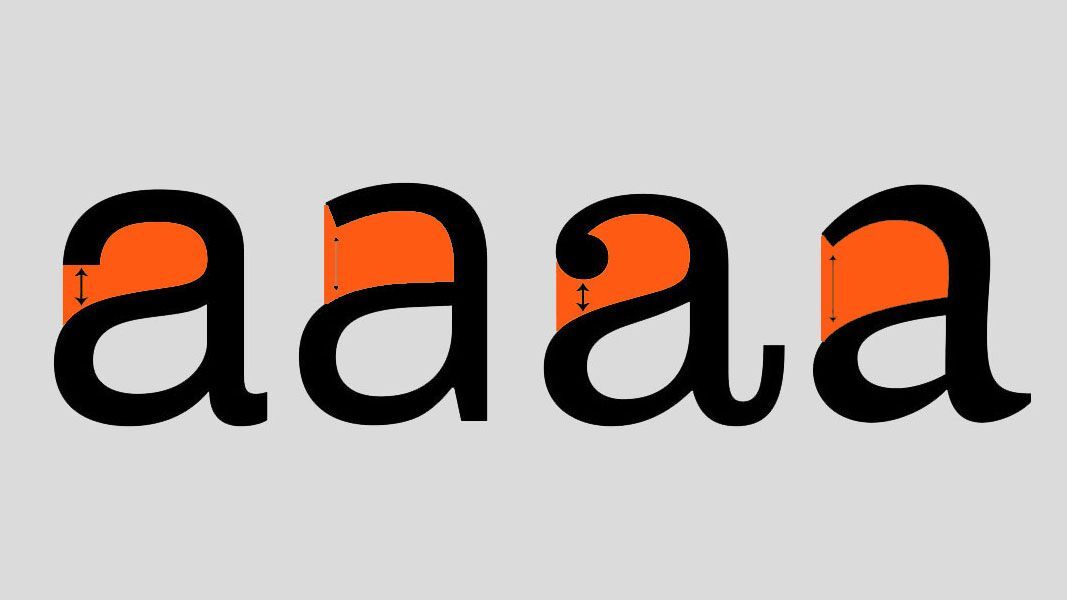No Products in the Cart

DOES YOUR FONT CHOICE SERVE YOU, OR DO YOU SERVE IT?

We stare at typefaces (fancy word for fonts) everyday — Helvetica Neue on iMessage, Roboto on Facebook, and Calibri on Outlook, but rarely do we really think about the people who designed the letterforms we allow into our minds.
That is, unless you are a type designer. What type designers understand more than anyone is that type is power — the power to express words and ideas. All type is subliminal, and there is always an underlying context. Letterforms are culturally loaded objects that reflect the people who made them as well as the narrative they want to tell.
Due to the elitist and discriminatory graphic design schools of the past, type designers of color had limited access to the tools and knowledge necessary to create typefaces. That is why typography has historically been an industry dominated by European and American white men. Even now, the type design field is 84% white. This means that the very words we see have bias in them, since they show a limited range of human experiences, many of them colonial and oppressive in nature.
The Fonts Right Under Our Noses
Baskerville and Helvetica are key examples of typefaces designed by European white men and are used to maintain order.

Baskerville
In 2013, the acclaimed filmmaker Errol Morris ran a bold experiment testing various fonts and their ability to convey “truth” to the readers of the New York Times. Out of all the fonts, Baskerville proved to be the most trustworthy.
And why is it considered trustworthy? It does disappear to the reader more easily than other fonts with exotic strokes and designs, allowing for more unconscious absorption of the underlying information.
But more importantly, we are simply exposed to Baskerville a lot, especially through the old English literature that forms the basis of our education system. This font was indeed designed by John Baskerville in England in the 1750s and has since been popular among publishers of “classics” series and textbooks. Morris himself jokingly now claims he writes all of his manuscripts in Baskerville.
Baskerville has been practically baked into our subconscious to represent the intellectual authority of dead white authors. So ideas that the words it contains flow seamlessly into our minds without the bat of an eye. Morris’ experiment therefore illustrates how your choice of letterforms has an impact on how much authority your words carry.

Helvetica
is perhaps the most famous font in the world. It is a sans-serif typeface developed in 1957 by Swiss designer Max Miedinger and Eduard Hoffman. It was created from the Modernist demand for function over aesthetics, which is exactly what Helvetica delivers — accountability, transparency, and accessibility. As with Baskerville, Helvetica is also so ubiquitous that there is even a full-length documentary showcasing it, directed by Gary Hustwit.
It presents itself as neutral and merely aims to get the point across, but in reality it may not be as innocent as it first appears. We associate Helvetica with authoritative things because governments use it so much (the EPA, Nasa, ‘Do Not Enter’ signs, bus stops, government tax forms), and therefore imbues Helvetica with the power to conquer, control, and colonize. It represents maintaining the established power and order in place.
Not surprisingly, Helvetica has received its fair share of criticism, from being labeled as the font of Capitalism, as it injected authority and power into corporate communications in the 1970s and onward and thereby launching the era of corporateness, to highlighting the dangers of globalization and standardization. Graphic designer Paula Scher even blamed the Vietnam war partially on Helvetica.
Making Social Movements Part of Our Everyday Vernacular

Type created by non-white-men rarely gets seen or taught in a design education. Luckily, the type design field is slowly transforming, and there are a few designers spearheading that change. Many of them take inspiration from posters and signages from social movements - for example, posters from NAACP Civil Rights, Women’s suffrage and ERA, the Stonewall Riots, the infamous “I Am Man” posters from the 1968 Memphis Sanitation Workers’ Strike, the National Chiano Moratorium Movement, the 1947 Women’s Demonstration in Buenos Aires led by Eva Peron.
All of the types seen in these moments in history aimed to defy and dismantle the establishment, rather than be neutral like Helvetica. They demand that you see them and read them - rather than unconsciously absorbing their messages, they beckon you to really think about their ideas and the voices behind the words.
Visually, they are distinct in the way their idiosyncratic shapes have a kind of handcrafted personality, rather than the bareness of something generated digitally. In other words, they call attention to the more humanistic quality of their forms, which in turn speaks to their message and cause.
We need to stop with the ivy league education snobbery that sees these kinds of typefaces as “informal” and therefore inartistic, lower-class, and outside the establishment. Instead, we should embrace their democratic qualities.

Gender Fail
is a queer publishing platform that looks at failure as a boundless source of inspiration. Since 2018, they have been making fonts based from queer and trans protests signs dating back to the Stonewall Riots in 1969, and putting them up online open-source. So far they have four type faces: “Act Up”, “I Am Your Worst Fear I am Your Best Fantasy/First Gay Americans”, “Mother Nature is a Lesbian”, and most recently “Black Lives Matter''.

Nat Pyper
is a type designer that focuses on queer anarcho-punk zines of the late 1980s and early 1990s. They created a typeface based off car repair flyers made by the Lesbian alliance in St. Louis in the 1970s in order to bring attention to the lesbian socialist history that is often erased or overlook in history as we know it. Pyper successfully designed a font that revives the past of Second Wave feminism and adds pride to intersectional feminism in the present.

Vito Bica and Selma Koran
designed an actively anti-facist and anti-hate typeface called Weltschrift, which means “World Type” in German. It fights racism by reappropriating typeface designs and symbols historically used by German and Italian Fascists - namely, giving them new meaning by subverting the Nazi’s approach to iconography and using the forms to create anti-hate posters. It in fact has specific limitations in the ways it should be used, one of them being editorial headlines on stories about race and prejudice. In this sense, using Weltschrift communicates a clear stance against the original evil intent of these letters.







